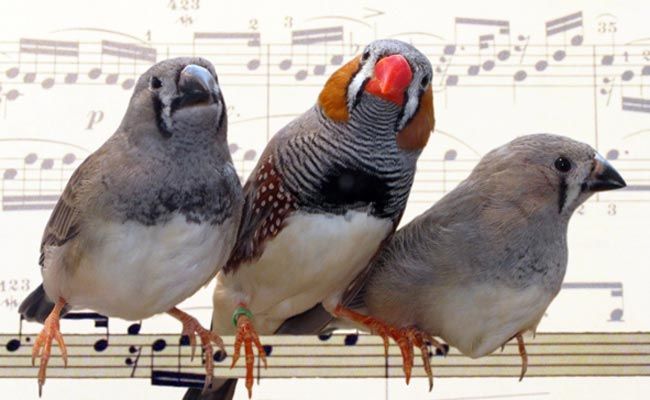Love Songs Bring Pleasure to Bird Brains

A male bird singing a song directly to a female bird undergoes changes to the dopamine receptors on neurons in his brain that are associated with reward and pleasure.
These changes are similar to those caused by addictive drugs. When a male bird sings a general song not directed at a female, the dopamine receptors are not triggered.
The research, done on 41 adult male zebra finches at the RIKEN Brain Science Institute in Japan, monitored the singing of the birds and found two distinctive types of singing – undirected and directed. The undirected songs, sung by birds when they are alone, follow a pattern filled with variable notes. When a female flies in, however, the singing becomes less variable and the tempo speeds up.
When the "love" song begins, the activation of the bird's dopamine receptors is triggered.
Why do researchers care about bird brain dopamine and the emotional state of male finches? It turns out that the same type of dopamine receptors in human and other animal brains are programmed to have a positive emotional response to rewarding stimuli, such as food or sex, the researchers said.
Earlier studies have shown that in humans, sexual rewards and the rewarding aspects of video games and chocolate can trigger the same type of brain circuits that are firing in the love-struck male finch. And these are the same circuits that are strengthened by such drugs as cocaine or amphetamine in a process that can lead to addiction.
"Despite the distant evolutionary relationship between birds and humans," the researchers said, "it may be that during such intense social interactions as courtship, both share some similar emotional state."
Sign up for the Live Science daily newsletter now
Get the world’s most fascinating discoveries delivered straight to your inbox.
The research was published in the journal Public Library of Science.
- Amazing Animal Abilities
- 10 Amazing Things You Didn't Know about Animals
- Gallery: Birds of Prey
Inside Science News Service is supported by the American Institute of Physics.












